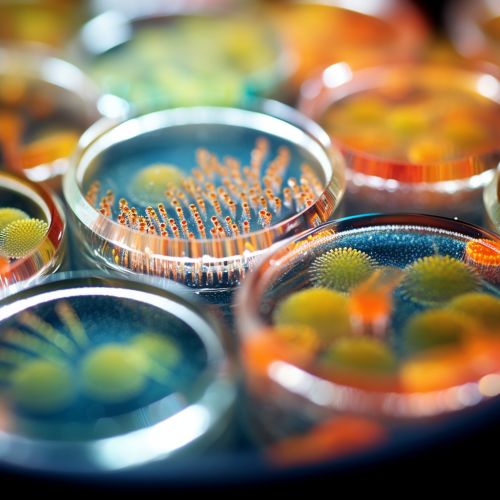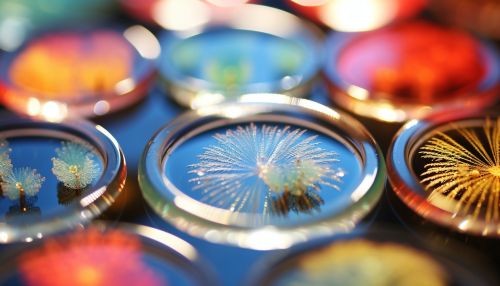Mechanisms of Microbial Bioremediation of Contaminated Environments
Introduction
Microbial bioremediation is a process that uses microorganisms to return the natural environment altered by contaminants to its original condition. Bioremediation is considered to be a cost-effective and natural method of treating contaminated environments, such as soil and water, by exploiting the ability of organisms to neutralize harmful substances.


Mechanisms of Microbial Bioremediation
The mechanisms of microbial bioremediation involve a series of complex biochemical reactions that are carried out by the microorganisms. These reactions can be broadly classified into two categories: direct and indirect mechanisms.
Direct Mechanisms
Direct mechanisms involve the breakdown or transformation of contaminants by the microorganisms. This can occur through a number of processes, including metabolic degradation, co-metabolism, and biosorption.
Metabolic Degradation
In metabolic degradation, the microorganisms use the contaminants as a source of energy or nutrients, breaking them down into less harmful or non-toxic substances. This process often involves a series of enzymatic reactions.
Co-metabolism
Co-metabolism, on the other hand, involves the transformation of contaminants even though they do not serve as a source of energy or nutrients for the microorganisms. This occurs as a side reaction during the metabolism of other compounds.
Biosorption
Biosorption is another direct mechanism of bioremediation where contaminants are absorbed by the microorganisms and accumulated in their biomass. This process is often used for the removal of heavy metals from contaminated environments.
Indirect Mechanisms
Indirect mechanisms of bioremediation involve the alteration of environmental conditions by the microorganisms, which in turn facilitates the degradation of contaminants. This can occur through processes such as bioleaching and biostimulation.
Bioleaching
In bioleaching, microorganisms produce certain chemicals that can dissolve heavy metals, making them more accessible for removal.
Biostimulation
Biostimulation involves the addition of nutrients or substrates to the environment to stimulate the growth of microorganisms that can degrade the contaminants.
Factors Influencing Microbial Bioremediation
Several factors influence the effectiveness of microbial bioremediation. These include the type and concentration of the contaminant, the characteristics of the contaminated environment, the type and abundance of the microorganisms, and the environmental conditions.
Type and Concentration of the Contaminant
The type and concentration of the contaminant can greatly influence the effectiveness of bioremediation. Some contaminants are more easily degraded by microorganisms than others. Furthermore, the concentration of the contaminant can affect the rate of degradation.
Characteristics of the Contaminated Environment
The physical and chemical characteristics of the contaminated environment can also affect the effectiveness of bioremediation. For example, the presence of other chemicals can either enhance or inhibit the bioremediation process.
Type and Abundance of the Microorganisms
The type and abundance of the microorganisms in the contaminated environment is another important factor. Some microorganisms are more efficient at degrading certain contaminants than others. Furthermore, a higher abundance of these microorganisms can lead to a faster rate of degradation.
Environmental Conditions
Environmental conditions such as temperature, pH, and oxygen levels can also influence the effectiveness of bioremediation. These conditions can affect the growth and activity of the microorganisms, as well as the solubility and availability of the contaminants.
Applications of Microbial Bioremediation
Microbial bioremediation has been used in a variety of applications to treat contaminated environments. These include the remediation of oil spills, the treatment of industrial waste, and the cleanup of contaminated soil and groundwater.
Remediation of Oil Spills
Microbial bioremediation has been extensively used in the remediation of oil spills. Certain microorganisms are capable of degrading the hydrocarbons present in oil, transforming them into less harmful substances.
Treatment of Industrial Waste
Industrial waste often contains a variety of toxic chemicals that can be harmful to the environment. Microbial bioremediation can be used to degrade these chemicals, reducing their toxicity and impact on the environment.
Cleanup of Contaminated Soil and Groundwater
Microbial bioremediation is also used in the cleanup of contaminated soil and groundwater. This involves the use of microorganisms to degrade the contaminants present in the soil or groundwater, returning the environment to its original condition.
Future Perspectives
The field of microbial bioremediation is continuously evolving, with new techniques and strategies being developed to improve the effectiveness of the process. Future research is likely to focus on the development of genetically modified microorganisms with enhanced abilities to degrade contaminants, as well as the optimization of environmental conditions to enhance the bioremediation process.
